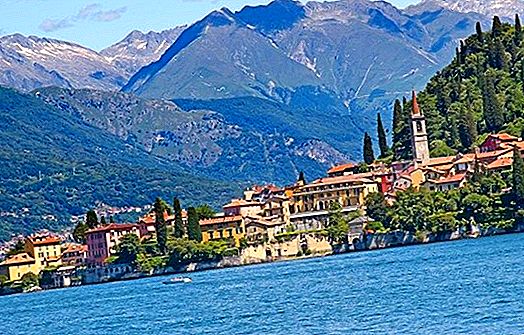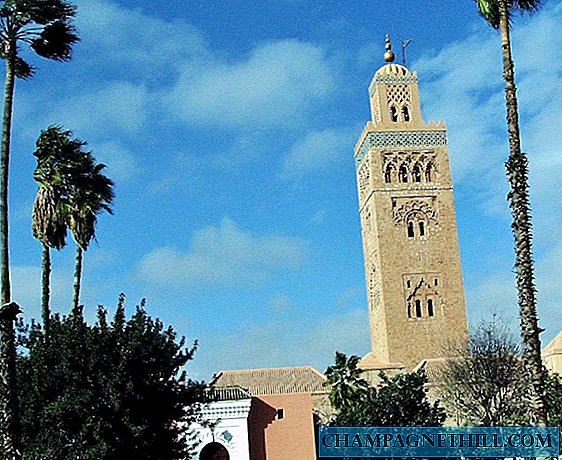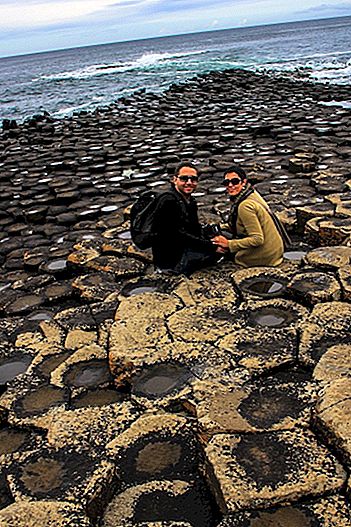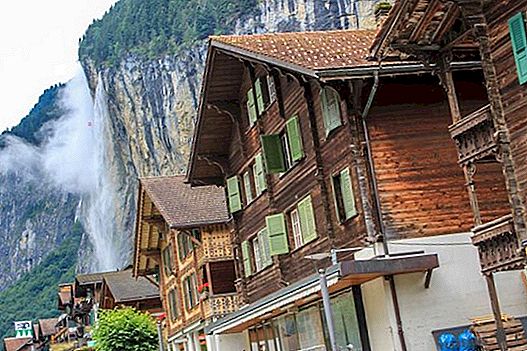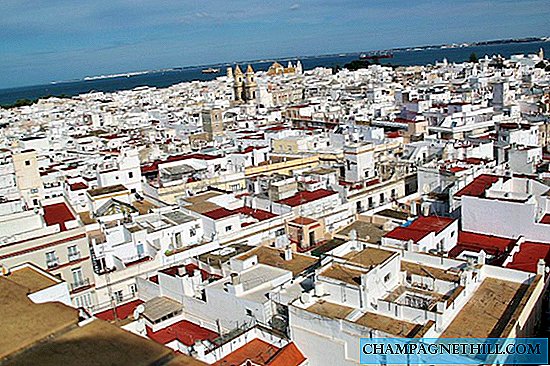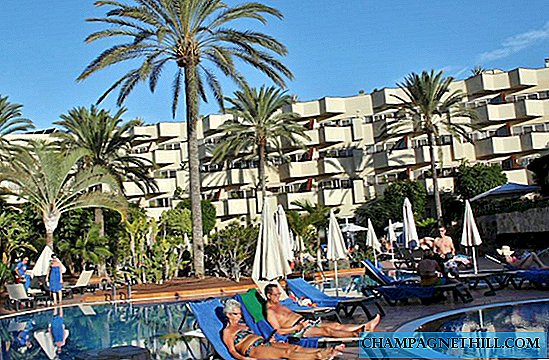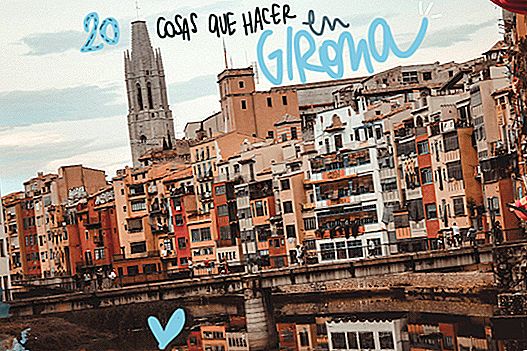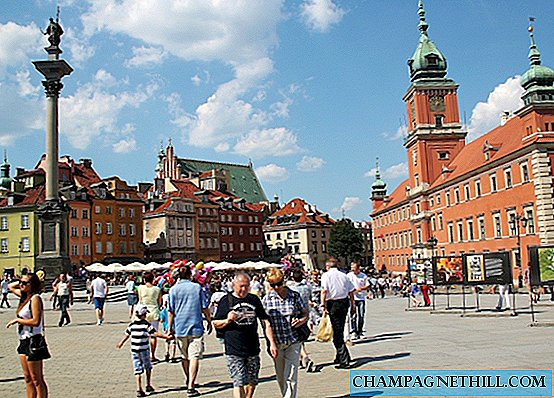
Royal Palace in the historic center of Warsaw
When you first travel to a country whose history You are not knowledgeable, it is convenient to make an approximation to it, as it will be the way to appreciate the importance of the monuments and historical enclaves that you are going to visit.
In addition, so you can also understand the characteristics and concerns of your society.
That is the case of Poland, a country that I recently had the opportunity to visit almost for the first time, except for a quick getaway that I made a few years ago to Krakow.

Corner of the historic center of Warsaw
You will know that Poland It is one of the countries that have joined the European Union after the fall of communist regimes in the late 80s.
And you may know the hard avatars of Poland during the WWII, but little else you will know about its history.
I hope you find them interesting historical data and curiosities of Poland which I will detail below.
Curiosities Poland
Input, although Poland is a member of the European Union Since 2004, when traveling to that country you have to take into account that it is not within the euro.

St. Elizabeth's Church from the Market Square in Wroclaw
Therefore, you will find yourself in the initial trouble of having to exchange your euros for your local currency, the Zloty (PLN).
The change is about four Zloty for one euro, and you should do it in the exchange offices calls kantor, which you find in the main streets and shopping centers of their cities.
As initial advice, avoid changing at airports, banks or hotels as you will have a less profitable change since they will charge you commission.
However, a great advantage that Poland is not integrated in the euro is that, compared to Spain, it is a cheaper country, especially if you are used to the usual prices in big cities like Madrid or Barcelona.

Old Renaissance town hall of Poznan
As I could see during my trip, in Poland they think that if they are integrated into the euro, prices will increase substantially.
Moreover, the Poles have a special concern for not making the mistakes that have been made in Spain, which have led us to the current economic crisis, specifically, those related to the "bubble»Real estate.
Poland history
From the historical point of view, there are four factors that you must take into account and that have conditioned the feeling of the current Polish society, in addition to being reflected in the monuments and corners that you will see in its cities and towns.
First, the Poland history It has always been conditioned by the future of its neighbors, especially Russia and what we know today as Germany.

Monument to the anti communist revolt in Poznan
In the visit of Poznan I met the legend which describes the birth of Poland, when three brothers ((Lech, Czech and Rus) arrived with their tribes to the lands between the Vistula and Oder rivers.
The first of them, Milk, decided to stay in those lands, and created the country of Poland. Czech decided to settle further south, and gave way to the birth of the Czech Republic. And, for its part, Rus it was established in the east, and thus was born Russia.
This legend conveys the idea of brotherhood between Poland and its neighbors, which in reality has not always been so.
While the origins of what is considered Poland as a country they date back to the sixth century, it was in 1035 when the first Polish king was established, and throughout the fourteenth century it was when that monarchy reached its fullness, having as residence the Wawel Royal Castle in Krakow.
However, this period of strength began its decline at the end of the 16th century, when the Republic of the two Nations, a federation between Kingdom of Poland and the Grand Duchy of Lithuania.
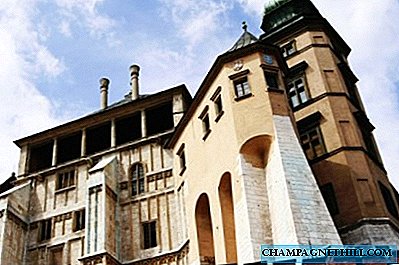
Royal Castle on Wawel Hill in Krakow
This peculiar situation was maintained until in 1795 the neighboring empires, Russia, Prussia and the Austro-Hungarian, divided the territories of what had been Poland, so that the Polish state disappeared from the map until 1918, when it was restored .
Religions in Poland
Another factor that you have to take into account is the importance of religion in Poland.
It is precisely considered that it was the Christian feeling that allowed to maintain the spirit of Poland as a country during those 123 years in which the State disappeared.
In your trip you will be able to verify the great importance that currently has the catholic religion in Poland, where among one of his great historical figures is Karol Wojtyla, Whoever it was Pope Juan Pablo II.

Interior of the Jesuit church in Poznan
That Poland is a mostly catholic country It has not been an obstacle so that there has always been a great coexistence between the different religions.
Poland has welcomed from the thirteenth century until the WWII the largest Jewish community in all of Europe.
In Poland Protestants also live together, and a curious example of this is the church of the Holy Cross in theCathedral Island (Ostrow Tumski) in Wroclaw
It is a building whose central nave has two floors, so that until 1997 the temple was shared by the Orthodox and Catholic rites, now being exclusively a Catholic church.
In the same Wroclaw there is a neighborhood that is an exponent of coexistence among Catholics, Lutherans and Jews. And in other parts of the country you can verify the existence of Muslims and Orthodox.

Museum of the Insurrection in Warsaw
World War II in Poland
But the two historical factors that have left their mark on Poland today, as you will see on your trip, have been the German occupation during the WWII and the Communist regime That came next.
Regarding the first, it will certainly be in the visit of the Museum of the Insurrection from Warsaw where you will have dramatic proof of what this war meant for Poland.
A consequence of it was the enormous destruction produced in the cities, so that now in your trip what you will see are reconstructions of the historical centers of the same.
Serve the fact that after the war 90 percent of the city Warsaw was completely destroyed.

Palace of Culture and Science in Warsaw
Now in your visit you can check on-site how the artistic works of Canaletto, court painter of the last king of poland during the 18th century, they were a great help to get the most fideligna reconstruction of the historic center of the Polish capital.
Of course, the dramatic persecution of Polish Jews by the Germans will have the best exponent during your visit to the former Auschwitz-Birkenau concentration camp near Krakow.
And as for the Communist regimeI remind you that Poland was the first country in the former Soviet bloc that, with the emergence of the union Solidarity in the city of Gdansk
That was the milestone that marked the beginning of the liberation process against the communist regime, which eventually led to the first democratic elections in 1989.

Presidential Palace on the Warsaw Royal Route
The feeling I extracted from me trip to Poland is that the Polish people consider the communist regime as a period of Russian occupation, and a gray stage from which they are now emerging.
In today's Poland, the great skyscrapers of Palace of Culture and Science built by the Russians in Warsaw at the beginning of the communist era, with its great contrast to the modern skyscrapers that have emerged in recent years, it remains a reflection of a stage that the Poles want to overcome.

